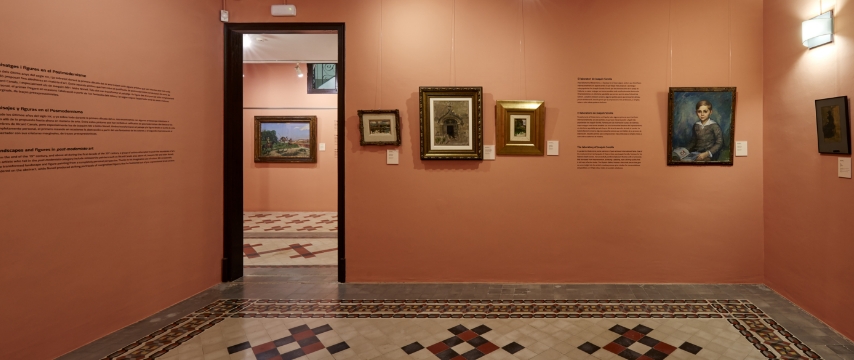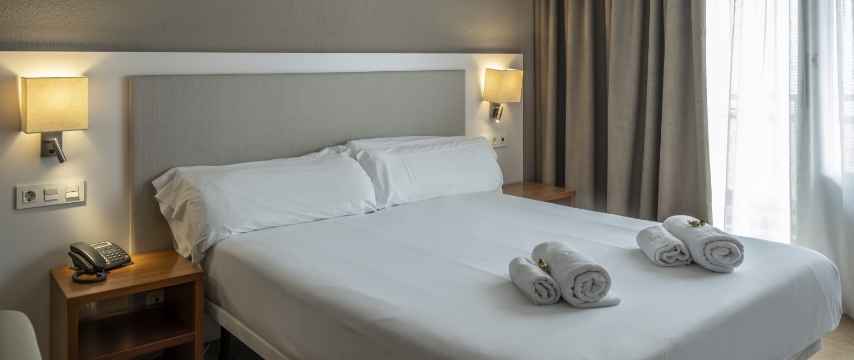

Immerse yourself in the history of Lloret de Mar by exploring the Maritime Museum - Can Garriga, Can Saragossa and the Can Font House Museum. Get ready to discover a maritime and cultural legacy that will captivate you!
Traditionally, the inhabitants of Lloret de Mar dedicated themselves to the countryside and the land, but the proximity to the sea allowed the town to exploit fishing and turn it into a source of income for many families. Over time, more and more families were dedicated to fishing and coastal and overseas trade.
The Indiano Enric Garriga returned to Lloret de Mar in 1887 after having achieved a good fortune in the Americas and commissioned the construction of a house on the Passeig de Camprodon i Arrieta, in front of the Lloret de Mar beach, for his wife and his seven children.
This three-story Indian house remained in the family until, in 1981, the City Council acquired it to restore it and convert it into the Maritime Museum. Currently, Can Garriga is one of the most important Indian houses in the town, with great value historical and heritage. The ground floor of the building still retains the original 19th century ceilings, walls, furniture, and floors.
The Maritime Museum is a space that tells the link between Lloret de Mar and the sea. Through a visual and sensory experience with educational and recreational elements, you will go through the time when the beach of Lloret de Mar hosted the construction of ships, to trips to the Americas to trade coffee, tobacco, and cotton.
It can be visited throughout the year in the morning or afternoon, except on December 24, 26 and 31 when it is only open in the morning and on December 25 and January 1 and 6 when the museum will be closed. Admission is €4 for adults and €2 for retirees, people with disabilities and members of the youth card, student card or family card.

Can Saragossa farmhouse was built by the Saragossa family around 1317 on top of a small hill surrounded by forests that is located on the current Vila de Tossa avenue in Lloret de Mar.
In 1885, Narcís Saragossa became the owner of the farmhouse and commissioned some remodeling works that gave the building the air of a modernist mansion, following the currents of the neo-Gothic historicist styles of the early 20th century. In 1954, the building was converted into a ten-room hotel and, in 1984, it was acquired by the Lloret de Mar City Council.
Currently, Can Saragossa houses the Interpretation Center of the Iberian world of Lloret de Mar, an archaeological museum where you can see the sites of the Iberian settlements and the pictorial collection of Joan Llaverías.
Currently, Can Saragossa houses permanent exhibitions of Iberian archeology (the world of the Iberians in Lloret de Mar, the Montbarbat site and the Turó Rodó site) and, on the second floor, temporary exhibitions. Its premises house the headquarters of the Cultural Heritage Unit of the City Council.
It can be visited from April to October from 10 a.m. to 1 p.m. and from 5:30 p.m. to 7:30 p.m. and from November to March only from 10 a.m. to 1 p.m. The museum will be closed on December 25 and 26 and January 1 and 6. Admission costs €3 for adults and €1.50 for retirees, people with disabilities and members of the youth card, student card or family card.

Can Font, also known as Cal Conde or Can Piuet, is a modernist-style building built in 1877 in the center of Lloret de Mar by order of Nicolau Font i Maig, its first owner.
The building consists of a basement, ground floor, two floors and an attic, which are distributed around a central staircase. The interiors are adorned with spectacular handcrafted details. And the façade is in the neoclassical style, predominant at the time of its construction.
In 1940, the house was sold by Nicolau Cabañas i Llovet to the Sabadell textile industrialist Ferran Comadran i Torres as a summer home. And later, in 1981, the town's Town Council acquired the property to preserve one of the stately homes of the city linked to the fortunes of Lloret.
Currently, Can Font is the only public house-museum in the Indian style that remains in Catalonia. Arranged visits are made with prior reservation at a price of €5 for adults and €2.50 for retirees, people with disabilities and members of the youth card, student card or family card.
Start preparing your getaway or your vacation in Lloret de Mar. Book at Rosamar Hotels, hotels on the beach, in a quiet area of the town, very close to the city center.
Hotel Rosamar Garden Resort, Hotel Rosamar & Spa and Hotel Rosamar Maritim are family hotels located near the beach, with activities for all ages, swimming pools, spa and entertainment service.
Hotel Rosamar Es Blau Adults Only +21 and Hotel Rosamar Maxim Adults Only +21, on the other hand, are hotels only for people over 21 years of age, to enjoy a relaxing holiday with a spa, gym and terrace with sea views.
Come and discover the historical legacy of Lloret de Mar!

The towns of Blanes, Lloret de Mar and Tossa de Mar, located in the south of the Costa Brava, are closely linked to the sea. Their hermitages, fishermen's quarters, monuments, and gastronomy have survived to the present day and remind us of their link with the sea.
The new HBO Max series, House of the Dragon, has been recorded in the Santa Clotilde Gardens in Lloret de Mar. The prequel to Game of Thrones, based on the novel Fire and Blood by George R. R. Martin, which tells the story of the Targaryen house two hundred years before the events of Game of Thrones.
Lloret de Mar’s city council has organized a cycle of gastronomic experiences with showcooking, wine tasting and a daiquiri and tapas workshop led by the best local talent in the field of gastronomy at the Lloret de Mar’s local market to publicize the comprehensive remodelling that will be carried out this 2023. Do not miss it!
Spring is one of the best seasons to visit Lloret de Mar. Despite filling up with tourists during the summer months, this time of year is the perfect time to explore the town in a relaxed way. Pleasant temperatures, empty beaches, streets without crowds... Come and enjoy the tranquillity of Lloret de Mar in spring!
Especially during your holidays, it is important to stop to disconnect; and in the town of Lloret de Mar you can enjoy this peace that you so long for. Discover some of the most peaceful, quiet and relaxed places in the town, where you can disconnect from routine and recharge your batteries.
Are you tired of always making the same plans during the holidays? We discover the best cultural, gastronomic and sports proposals to do in Lloret de Mar during the coming months and not get bored for a second this summer!
Can Font, also known as Cal Conde or Can Piuet, is a modernist-style building in Lloret de Mar built in 1877 by the Lloret-born Fèlix Torras i Mataró, commissioned by Nicolau Font i Maig. Everything you didn't know about the only Indian-style house-museum in Catalonia!